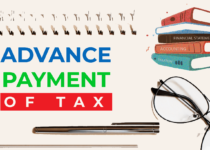Achieving Financial Freedom
Building a Path to Financial Independence
Financial freedom is a goal that many individuals struggle for, offering a life of security, flexibility, and peace of mind. It represents the ability to choose based on personal preferences rather than financial constraints. While the path to financial freedom may differ for each person, it generally involves adopting healthy financial habits, setting clear goals, and making informed decisions. This article explores critical strategies and principles that can help you embark on the journey towards financial freedom.
1. Establishing Financial Goals
The first step towards achieving financial freedom is setting clear and realistic goals. Start by identifying your short-term and long-term objectives. Do you aim to pay off debts, save for a down payment on a house, or build a retirement fund? Having specific goals helps create a roadmap for your financial journey and motivates the way.
2. Creating a Budget and Managing Expenses
Developing a comprehensive budget is crucial for effective financial management. Track your income and expenses to gain an understanding of your cash flow. Categorize your expenses and identify areas where you can cut back or adjust. You can allocate more funds towards savings and investments by prioritizing needs over wants and making conscious spending decisions.
3. Debt Management
Debt can be a significant obstacle on the path to financial freedom. Prioritize paying off high-interest debts like credit card balances or personal loans. Explore debt consolidation options or negotiate with creditors to reduce interest rates. Adopting a disciplined approach to debt management will free up resources for other financial goals.
4. Building an Emergency Fund
Life is unpredictable and unexpected expenses can throw your financial plans off track. Building an emergency fund is essential to protect yourself from unforeseen circumstances. Aim to save at least three to six months’ money for living expenses in a readily accessible account. This fund acts as a safety net, providing peace of mind and allowing you to handle emergencies without resorting to debt.
5. Saving and Investing
Developing a habit of regular saving is vital for long-term financial success. Set aside a portion of your monthly income and direct it towards savings and investments. Explore different investment options like stocks, bonds, mutual funds, or real estate, on the bases of your risk tolerance and financial goals. Diversifying your investments helps spread risk and can potentially provide higher returns.
6. Continuous Learning and Skill Development
Investing in your knowledge and skill development can significantly impact your earning potential and financial freedom. In a rapidly changing world, staying updated with industry trends and acquiring new skills can open doors to better job opportunities or entrepreneurial ventures. Seek out courses, workshops, or online resources that can enhance your expertise and marketability.
7. Seek Professional Advice
Consider consulting with a financial advisor or planner who can provide personalized guidance tailored to your specific financial situation. They can help you create a comprehensive financial plan, identify investment opportunities, and assist with tax planning. A professional can offer valuable insights and keep you accountable on your path to financial freedom.
Conclusion
Achieving financial freedom is an attainable goal that requires discipline, planning, and a long-term perspective. By setting clear goals, managing expenses, reducing debt, and making smart investment choices, you can gradually build a solid financial foundation. Remember that financial freedom is not achieved overnight but is the result of consistent effort and wise decision-making. Start taking control of your finances today, and embark on the rewarding journey towards financial independence.


